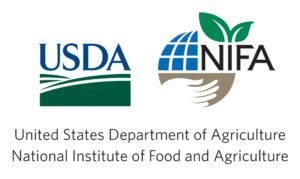Water Resources in a Warming World
About this course
Curriculum for a survey course designed for sophomore-level community college students
Water Resources in a Warming World is a series of 10 modules. Modules are designed to be independent, so that instructors may pick and choose as they see fit. Readings and supplemental content used in the modules are open-access; neither students nor instructors need to purchase materials for these modules.
Water Resources in a Warming World was created based on a survey of Tribal Colleges and Universities (TCU). The survey indicated interest in curriculum for: water quality and testing, sustainability planning, climate modeling and change impacts, and green power. Financial support for creation of the modules was provided by the USDA National Institute of Food and Agriculture (NIFA) and First Americans Land Grant Consortium (FALCON), and assistance was provided by the Native Waters on Arid Lands project at the Desert Research Institute.
The creator of Water Resources in a Warming World is Dr. Judy Dudley, an Applied Ecologist with 35 years of professional experience as an environmental consultant and research scientist. She has worked on projects in many countries and throughout the US. In 2019-2020 she served as an AmeriCorps VISTA at a Tribal College.
Course Materials and Modules
Instructor Notes, Syllabus, and Course Flyer
Download the instructor notes, a class syllabus, and flyer for Water Resources in a Warming World.
Module 1: Water Characteristics
Summary: In this module you will learn what water is, what makes it unique, and how it is important in global climate issues.
Module 2: Weather and Climate
Summary: In this module you will learn what comprises weather systems and how that is tied to climate.
Goals: By the end of this module you will be able to describe how weather and climate differ, describe how greenhouse gas emissions (GHG) make the planet warmer, and identify (and use) reliable sources of information to describe weather and climate for your region.
Module 3: Water Cycles and Watersheds
Summary: In this module you will learn about the water cycle, global distribution of water resources, and basic watershed principles.
Goals: By the end of this module you will be able to describe your watershed at multiple scales, identify the major sources of water in your region, and discuss the ways in which surface water and groundwater are interconnected.
Module 4: Climate Models
Summary: In this module you will learn how climate models are constructed, from basic to complex.
Goals: By the end of this module you will be able to evaluate outputs from different climate models and identify where to find reliable climate change model results for your region.
Module 5: Water Systems - Abundance and availability
Summary: In this module you will learn how access to water has shaped past and present human populations.
Goals: By the end of this module you will be able to identify how freshwater availability is changing regionally and globally, water use patterns, causes and effects of drought, and sources of water conflicts.
Module 6: Water For Life
Summary: In this module you will learn about types of waterbodies and why they are important.
Goals: By the end of this module you will be able to describe the role of water in different ecosystems, and also basic water (in)equity issues in the world, the U.S. and your community.
Module 7: Water and Transportation
Summary: In this module you will examine links between climate change, water and modern transportation.
Goals: By the end of this module you will be able to evaluate the GHG emissions and water footprint of your transportation needs.
Module 8: Water and Energy
Summary: In this module you will learn about the water-energy nexus.
Goals: By the end of this module you will be able to describe sources of energy and their use in regions of the U.S. as well as greenhouse gas emissions from different energy sectors.
Module 9: Water Quality
Summary: In this module you will learn about major sources of water pollution and measures taken to identify and quantify water quality with respect to public health and the environment.
Goals: By the end of this module you will be able to describe major sources of impairment of water quality globally and in your region, current efforts by the U.S. Congress to protect water resources, and design your own study to evaluate the quality of your drinking water.
Module 10: Water Quality Laws and Regulations
Summary: In this module you will learn about the CWA and SDWA and how they may (or may not) protect water resources in a warming world.
Goals: By the end of this module you will be able to describe the major objectives of the CWA and SDWA, describe why it is important to have such laws, and identify ways you can engage in protecting water resources in your community.
Sponsoring Agency: USDA-NIFA
This project was made possible with support from USDA-NIFA grant #2015-69001-23190.

Contact
To learn more about this course, please contact:
John L. Phillips, Ph.D.
Executive Director
First Americans Land Grant Consortium (FALCON)
1040 Creekstone Lane
Bishop, GA 30621
(706)310-4199
[email protected]
